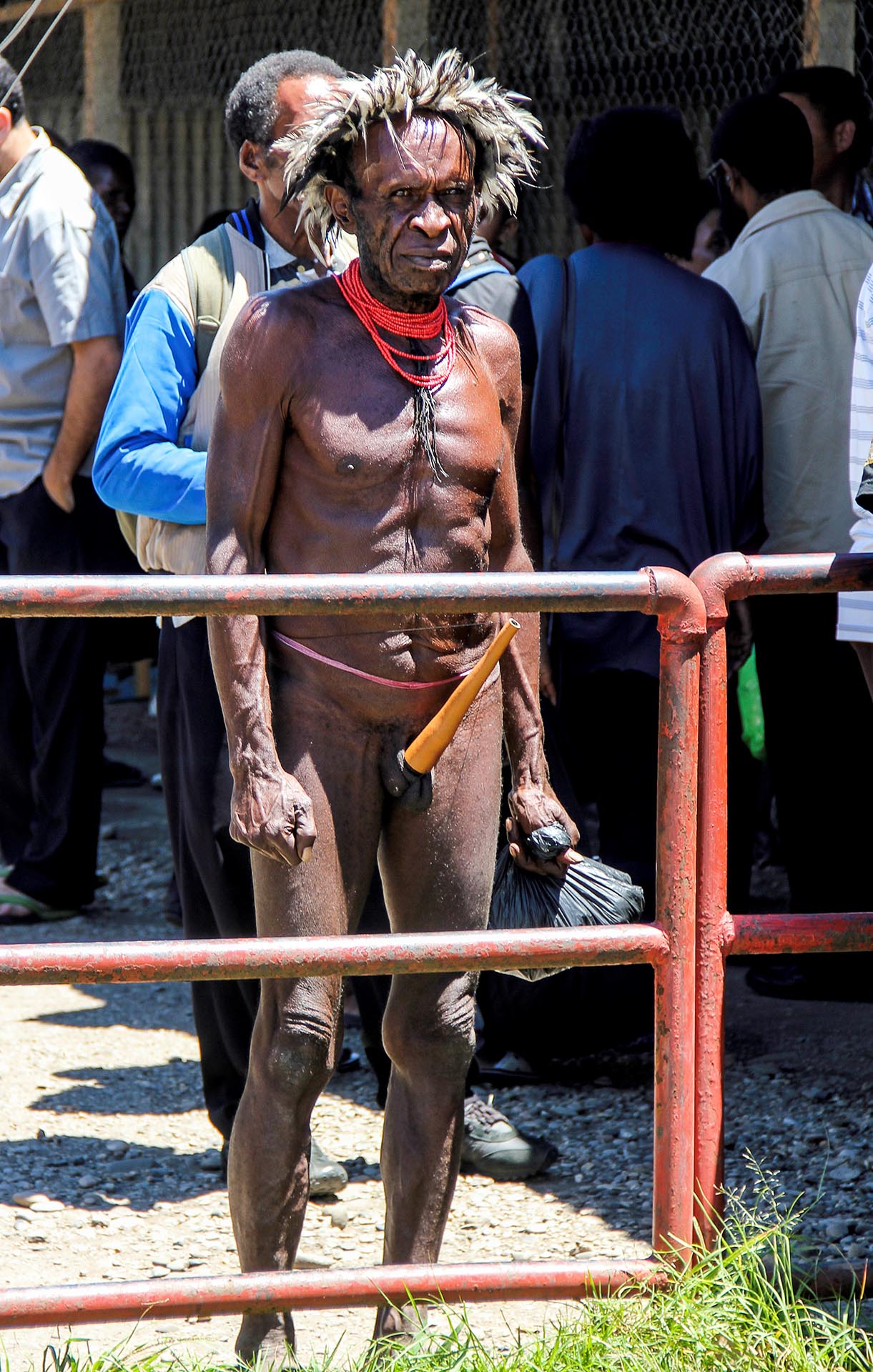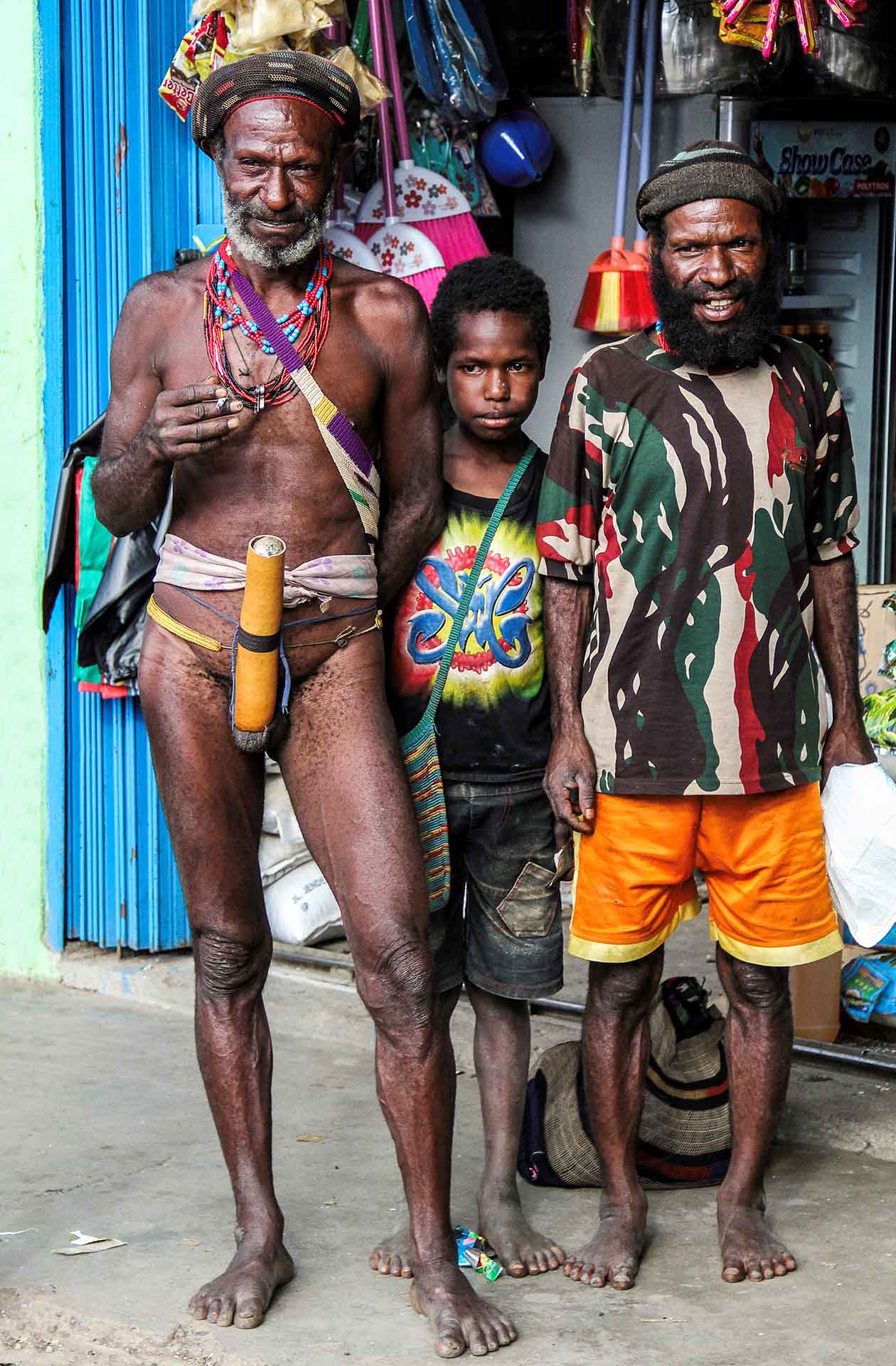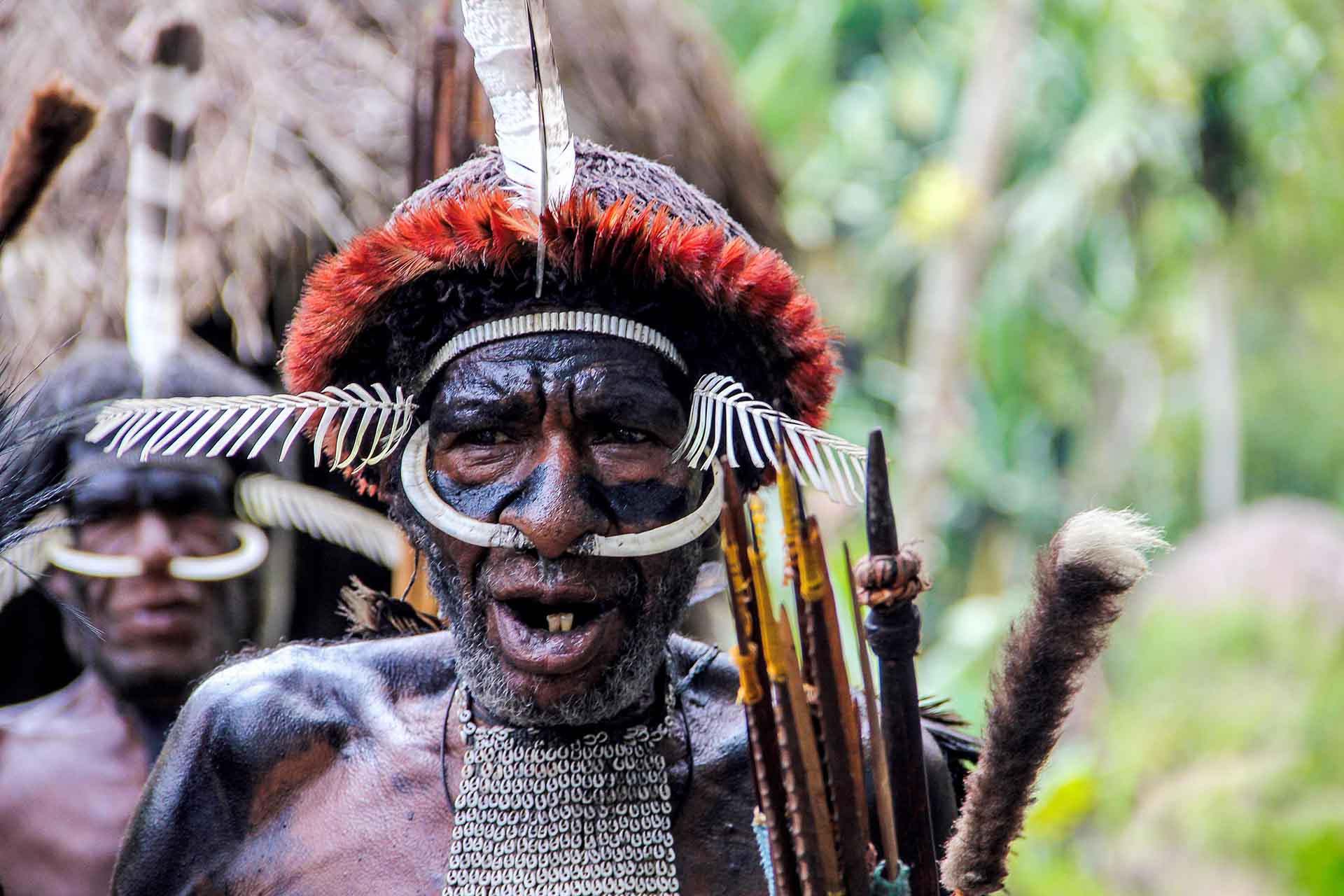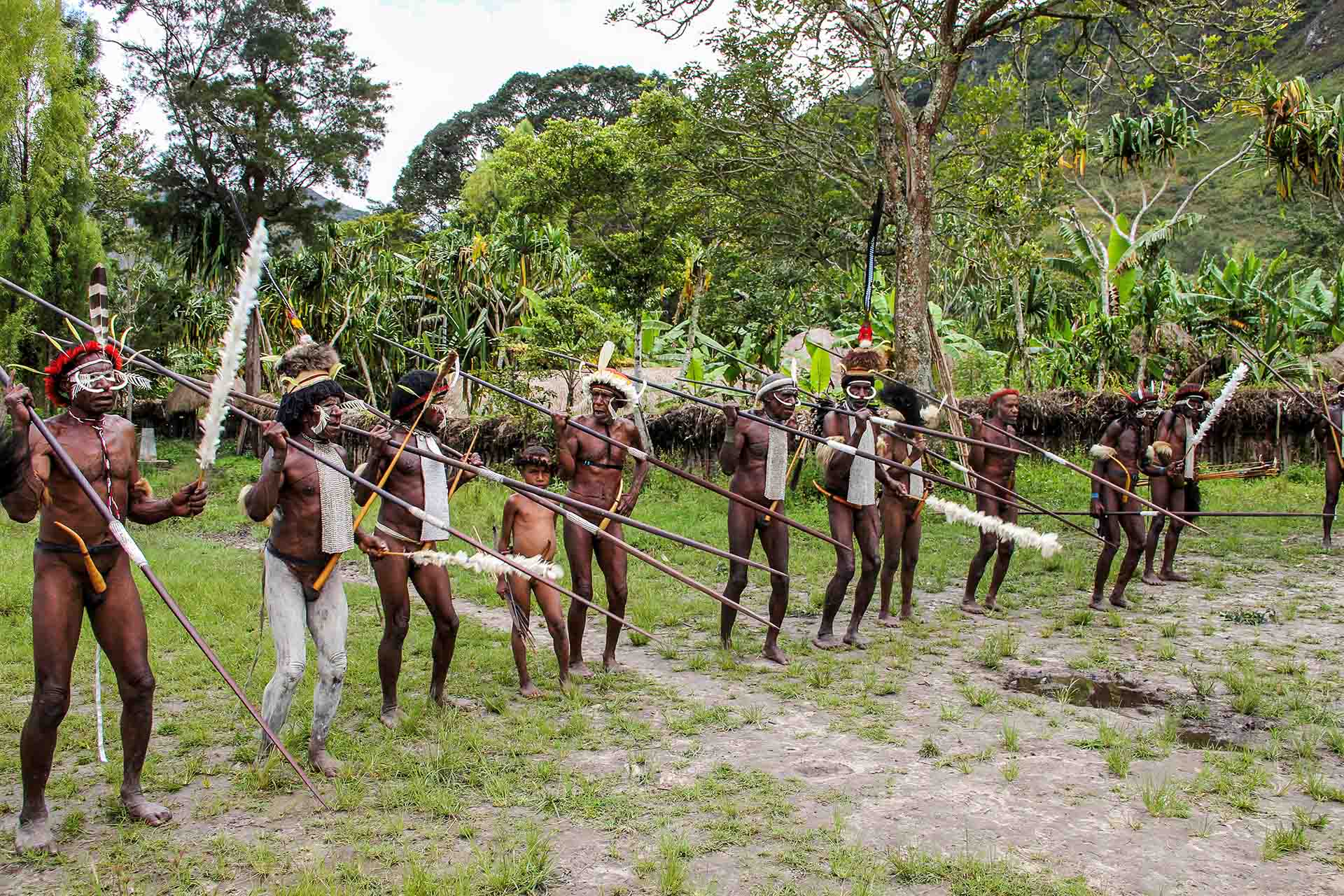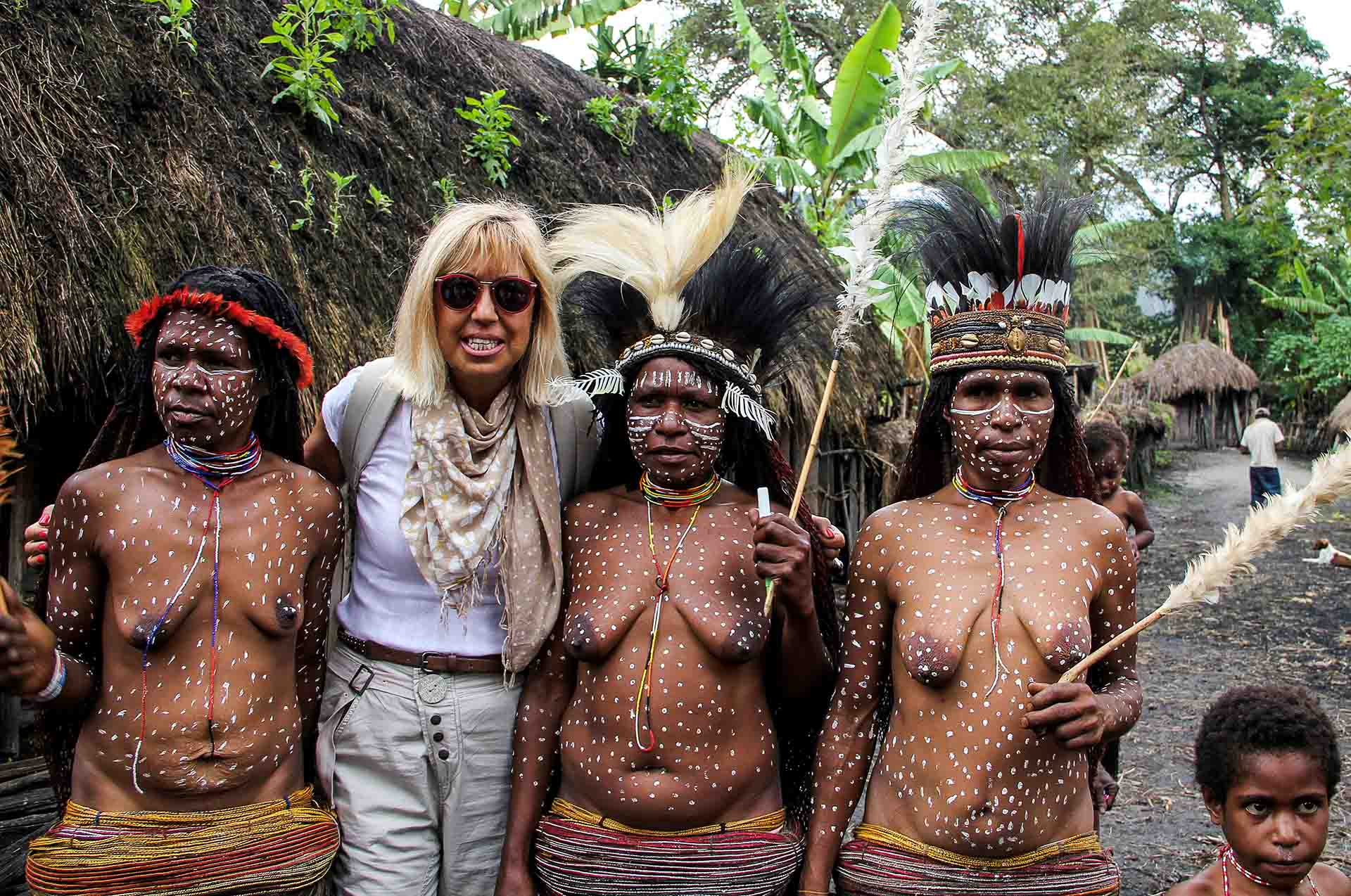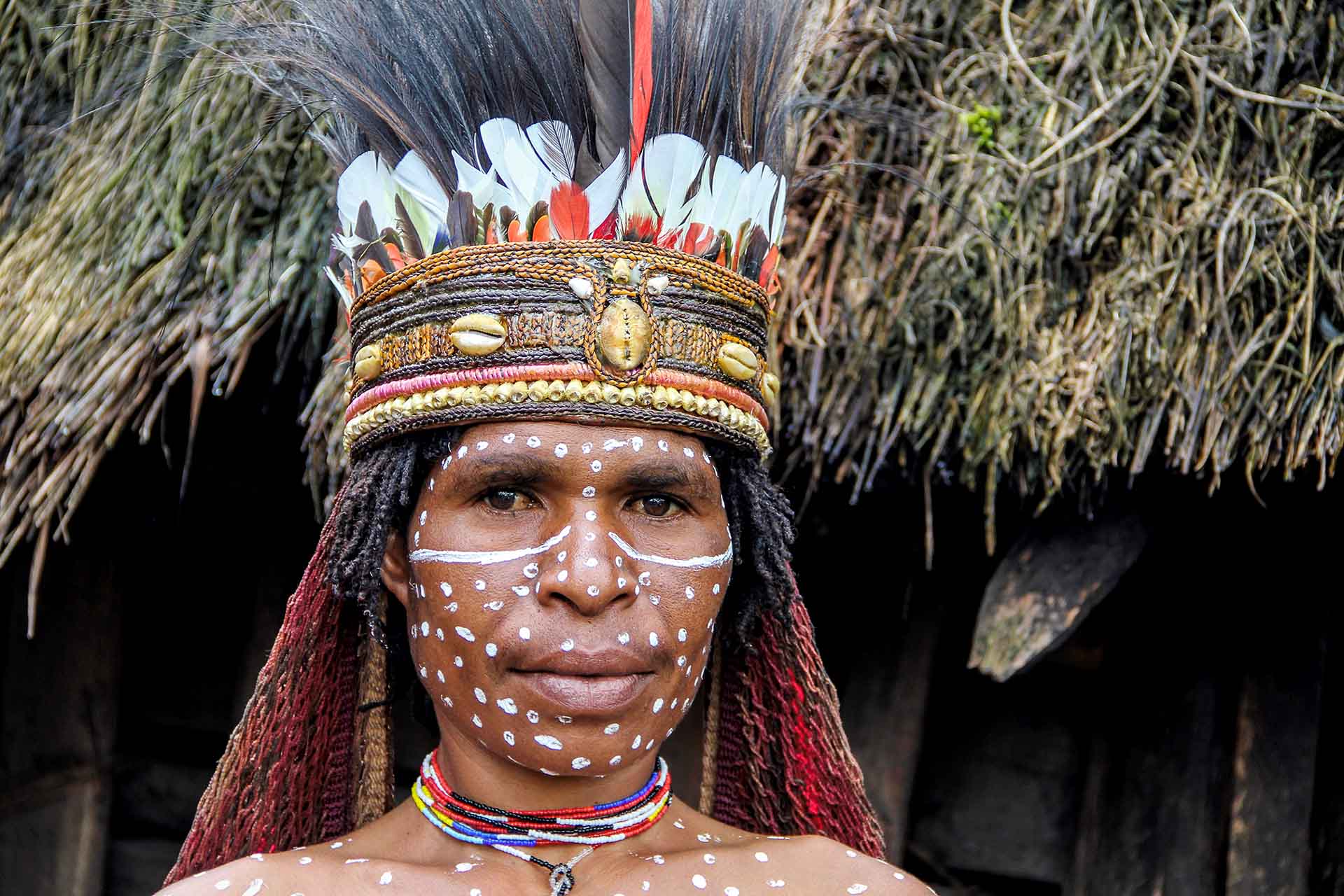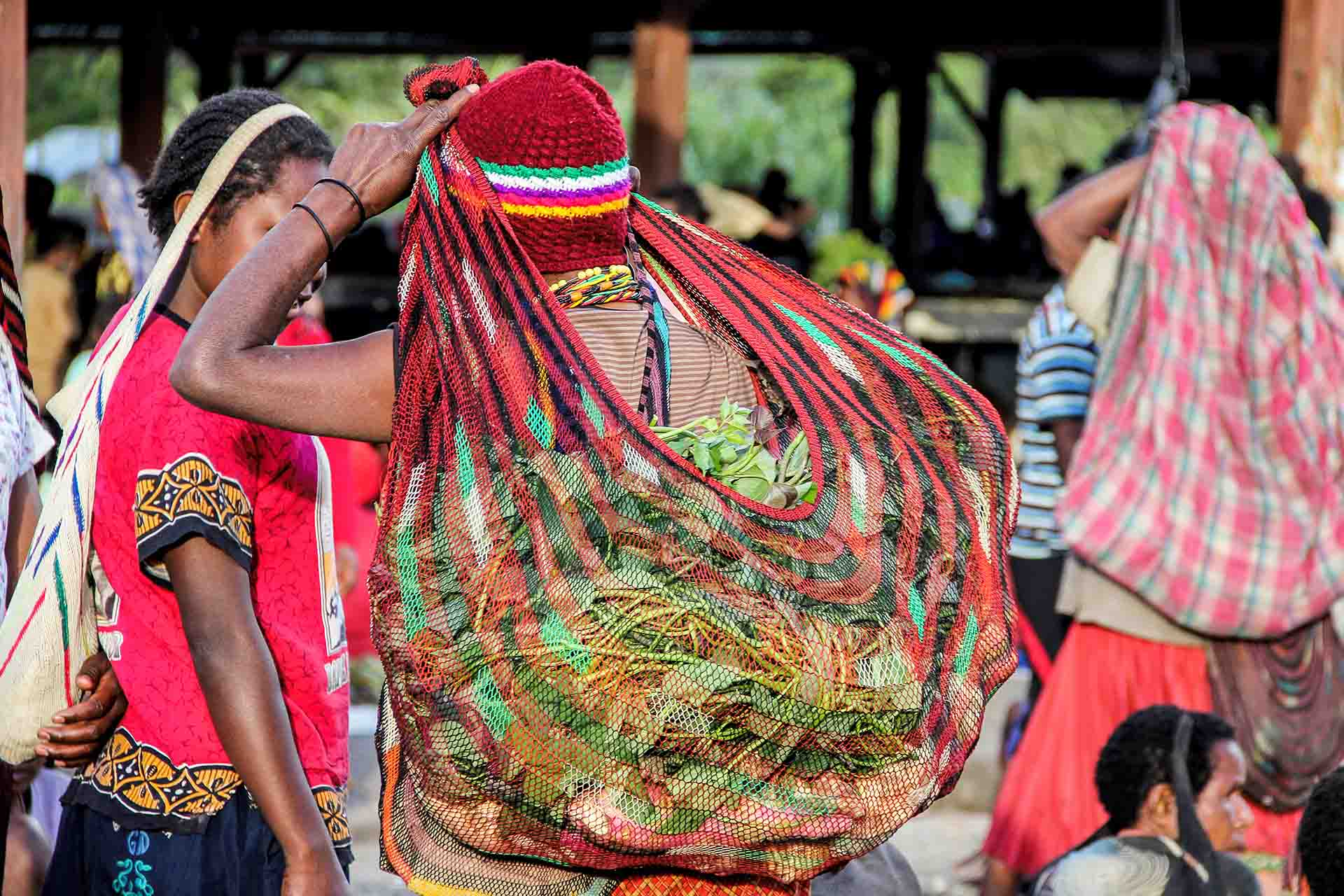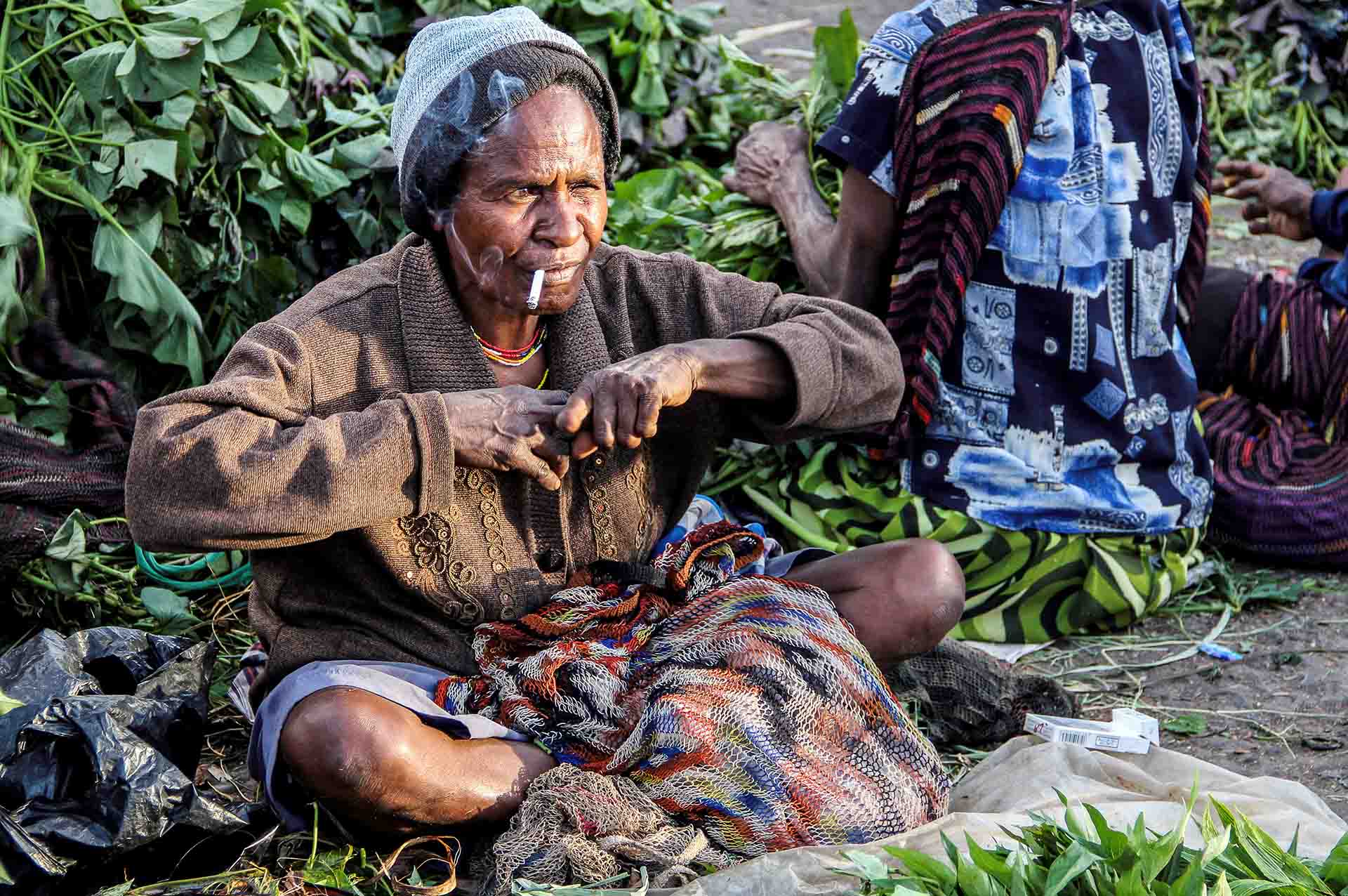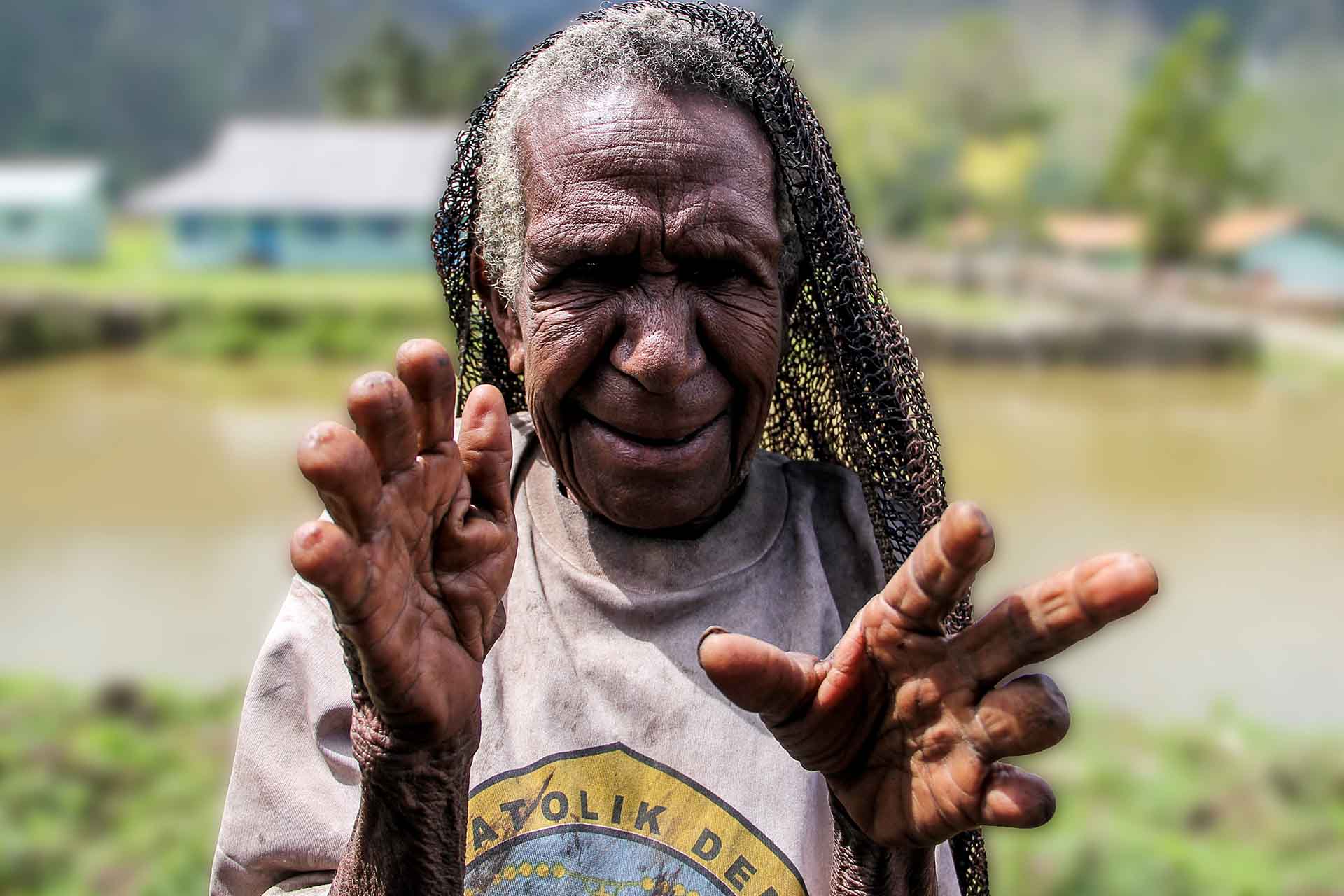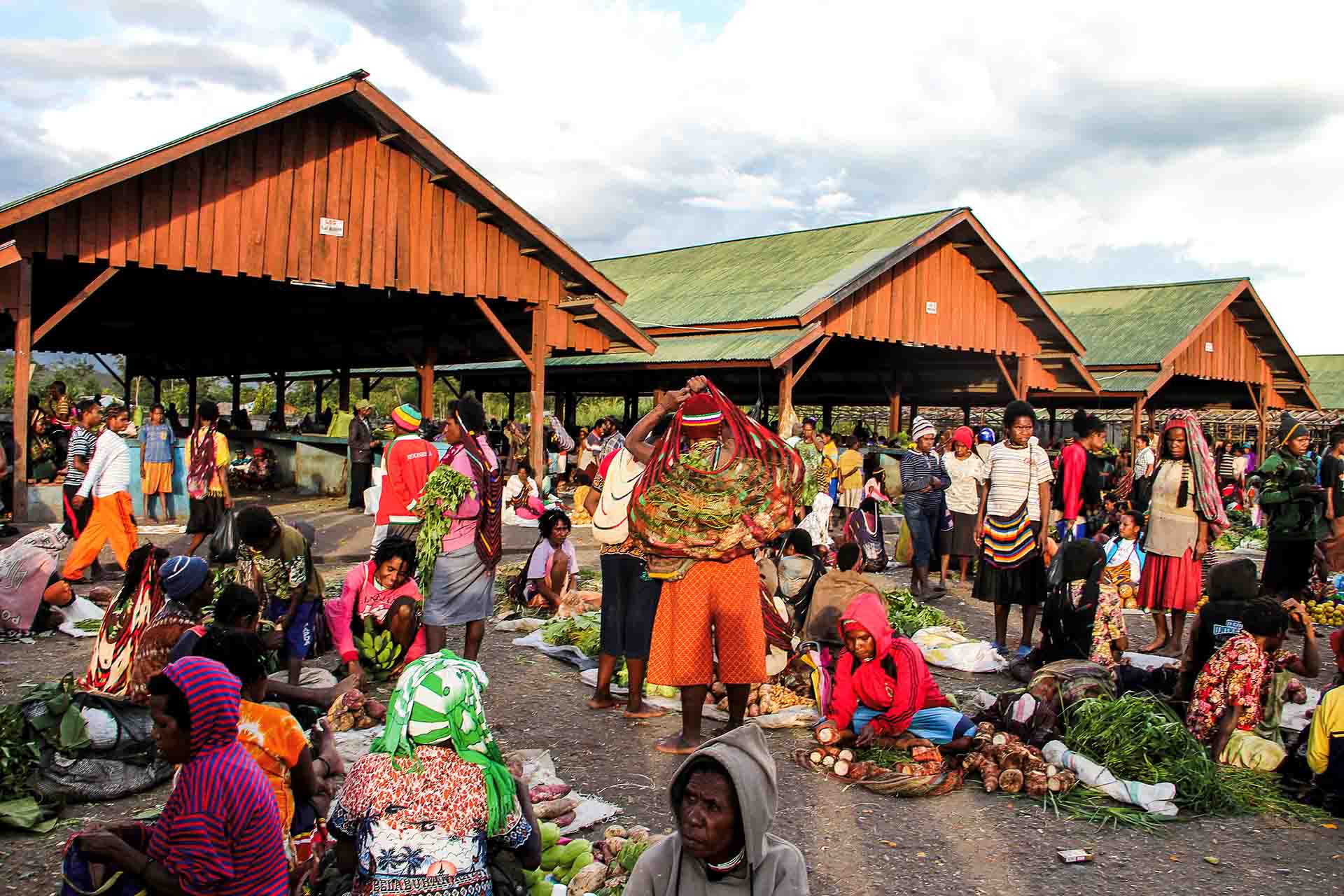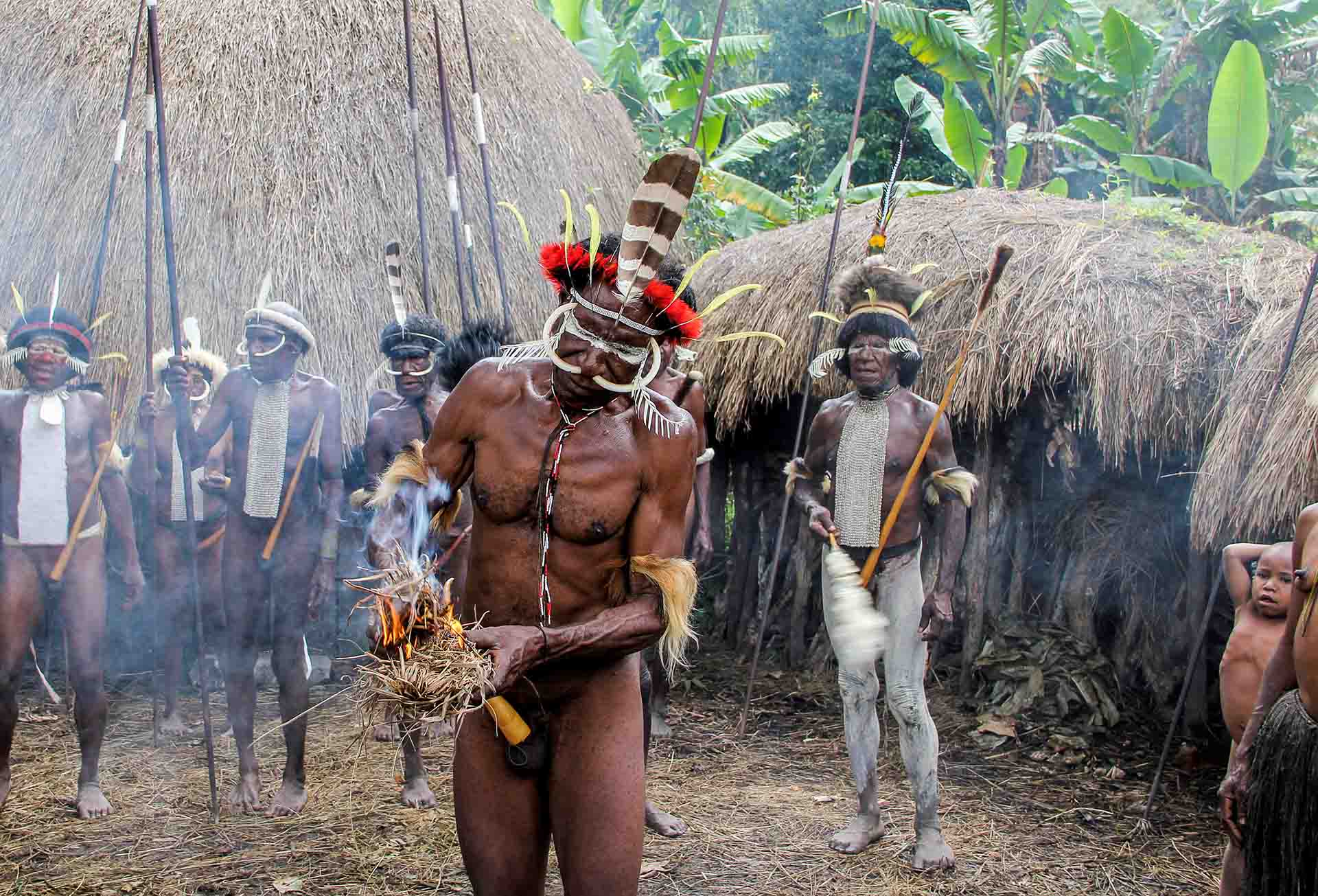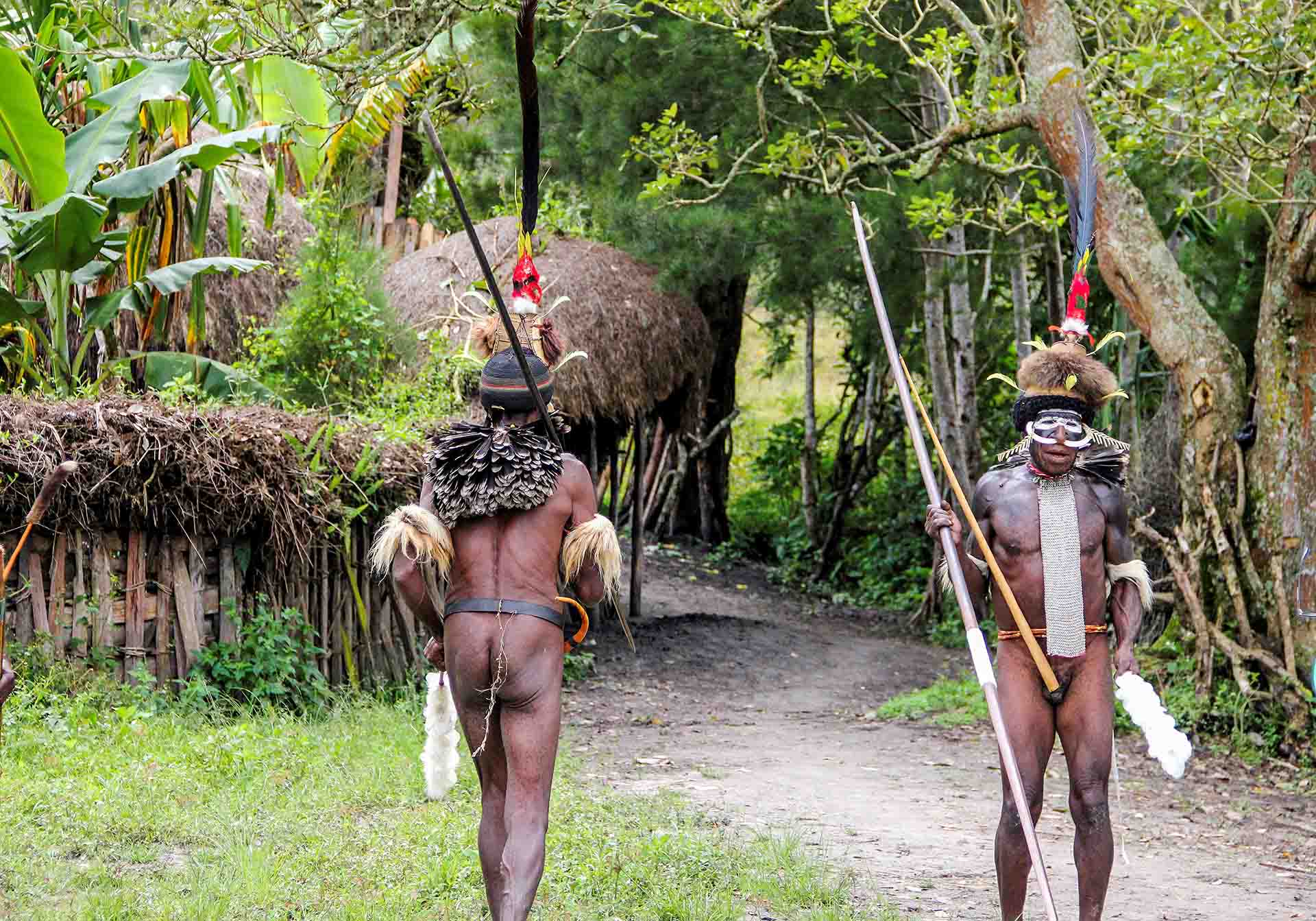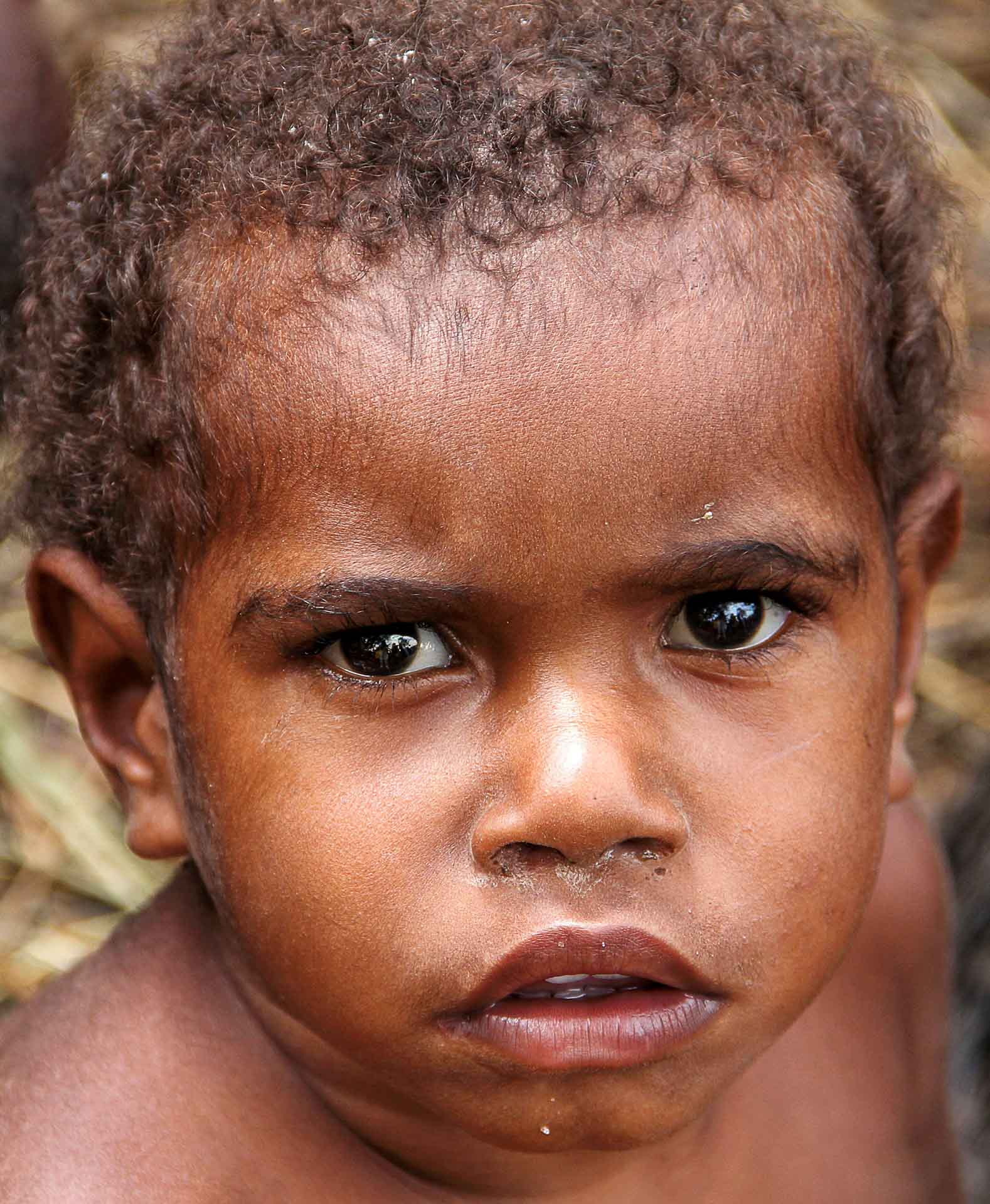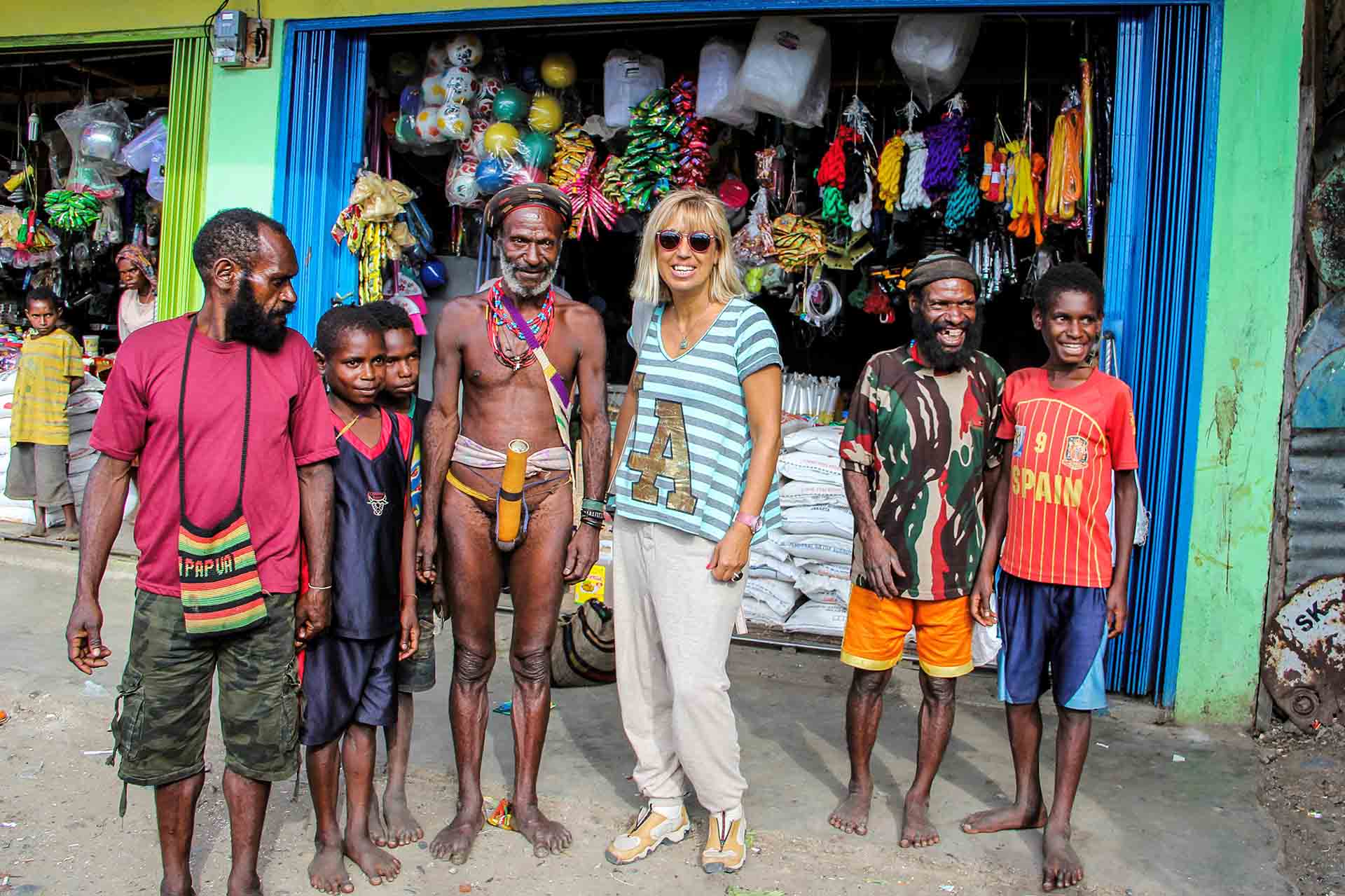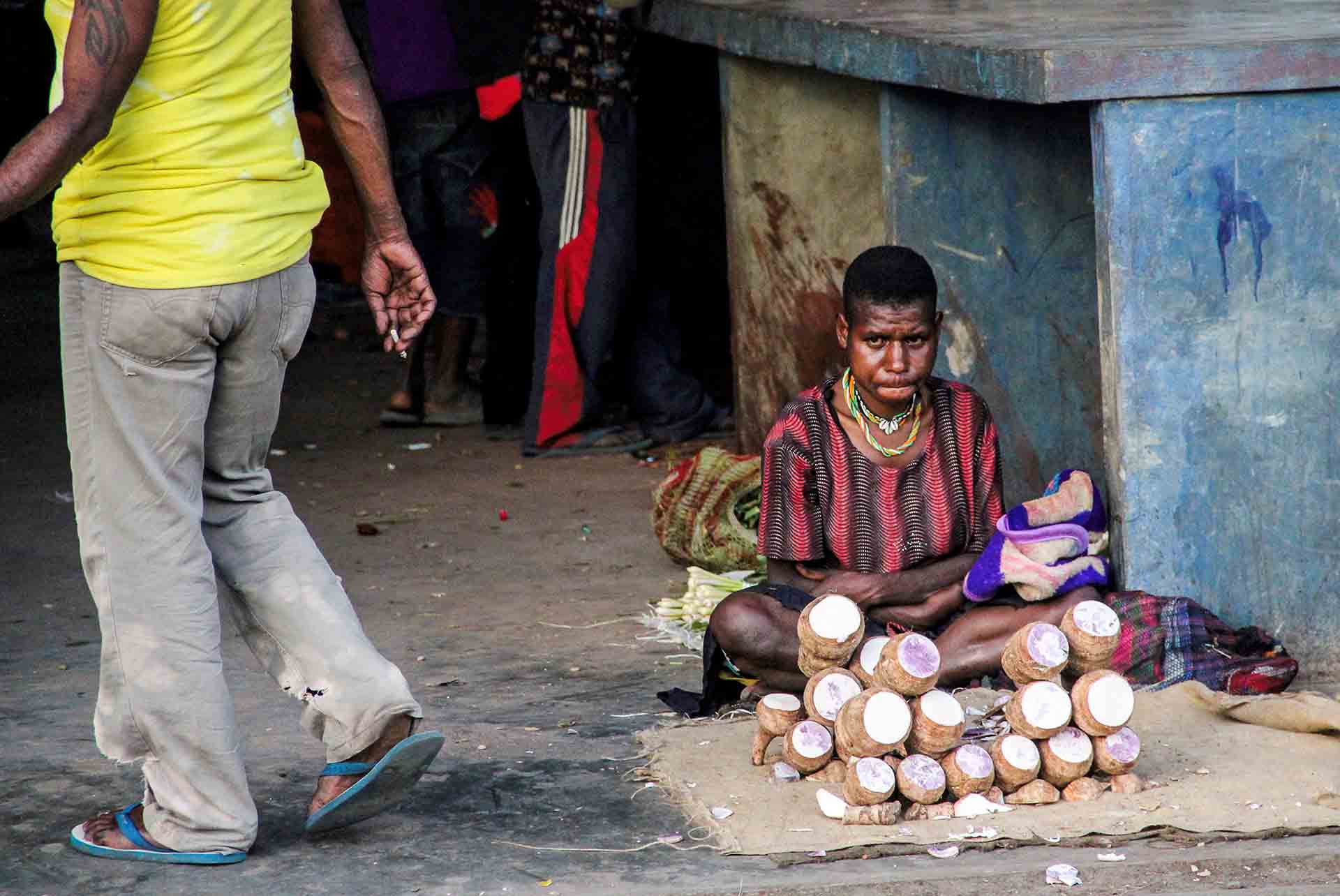Women are bare-breasted and sometimes decorate their bodies and faces with white blots and lines. They wear short skirts made of straw and orchid fibers, the form and the length of which depends on their family status. Their heads are decorated with wreathes made of flowers and feathers, sometimes with elaborate crowns at the top.
An indispensable accessory of their attire is the noken, the huge knit bag-purse that is strapped on their heads and hangs on their backs. Apart from decoration this accessory serves to carry provisions, stuff for sale and whatever else you can imagine!
In Wamena, both men and women walk around normally dressed with only a few exceptions, such as the Dani man that "welcomed" us at the airport and the Lani we saw at the market of Rasar Nayak!
I was a shocked by a barbaric custom, to clip off the fingers of women, that starts with their widowhood and continues for every male relative that dies, as indication of respect and mourning. In villages near Wamena the custom is gradually fading out, as it has been banned by the government; nevertheless, I met several old women with many fingers maimed.
In Wamena, markets Rasar Nayak and Sinakma are mosaics of images that can cause a cultural shock. Sweet potatoes are the favorite product while the people's "beloved" pigs are omnipresent! It is their favorite source of meals. They cook pork with vegetables and they slaughter the animals with knives made from bamboo stalks.
The Danis are known for their "smoked mummies". In the village Jiwika we saw the 250-year old mummy of the famous chieftain Wimontok Mabel, whose black corpse is the best preserved and easiest accessible of its kind near Wamena.
Apart from Jiwika we also visited the villages Opigia and Anomoge where I was impressed by the environmental adaptation of the structure of their straw roofed huts and the necessary composite fencing but above all I was impressed by the warm reception of the "savages" despite the welcome war ritual!
Although the Dani have a most horrific reputation, among the other "savages" of this area, (since they were the most ferocious head hunters), they were friendly, warm and polite with us. Through "body language" we were able to communicate efficiently with them and approach their simple, traditional way of life.
And me of course, i loved the youngest members of the tribe, the children!
I wish that these genuine human beings hold onto their strong feeling of identity and protect their traditions from changes that the tourist traffic causes and stay the "people of the stone age; the savages of the Baliem valley".
